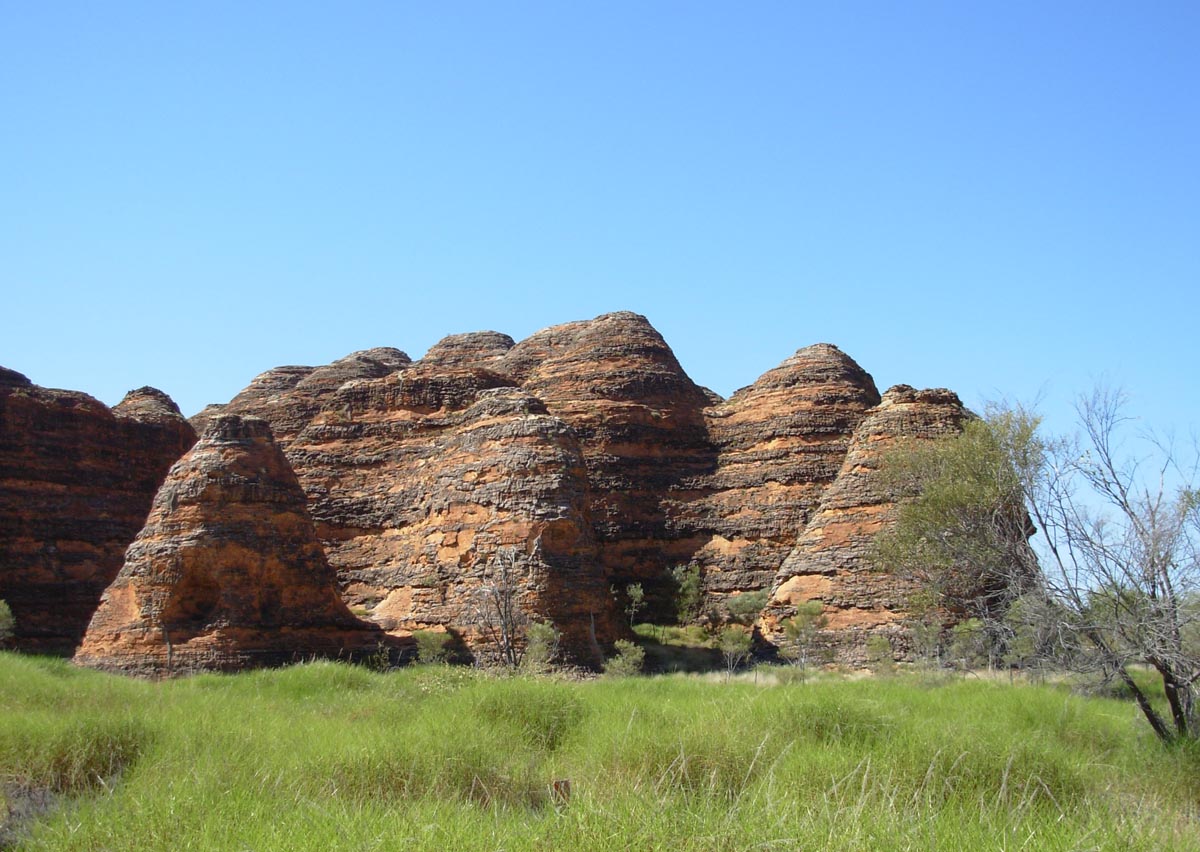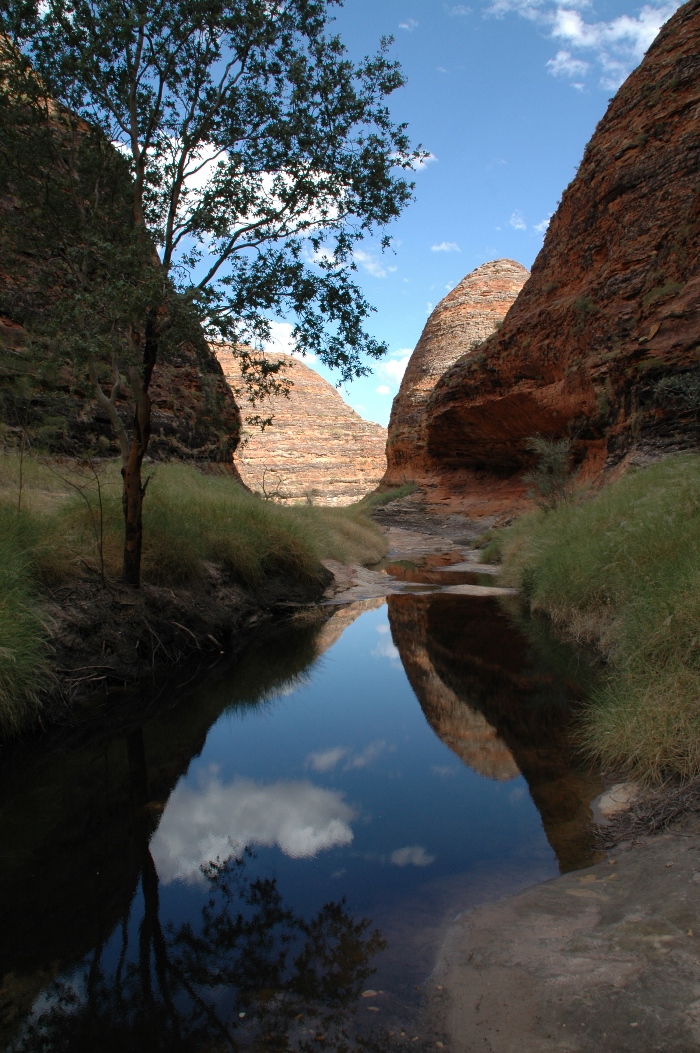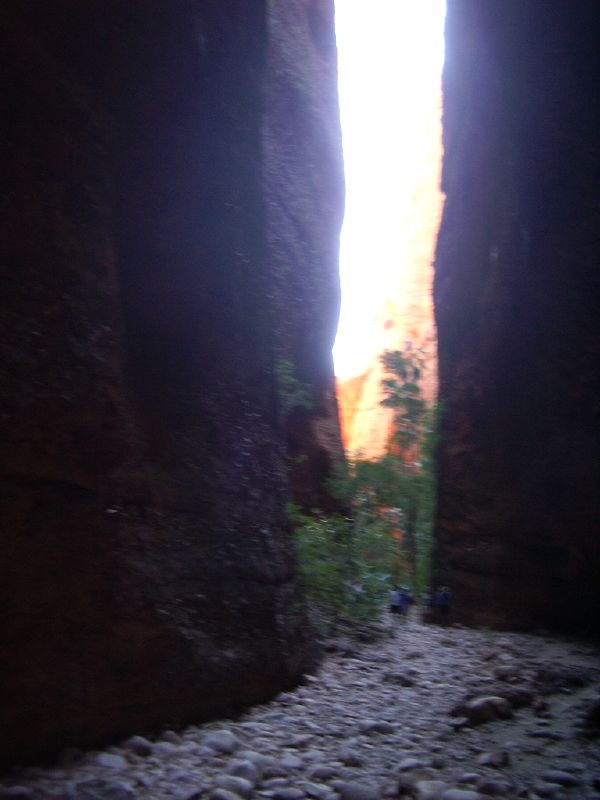 Purnululu National Park is a World Heritage Site in Western Australia, 2054 km northeast of Perth. The nearest major town is Kununurra to the north, or Halls Creek to the south. Access to the park by road is via Spring Creek Track, from the Great Northern Highway approximately 250 km south of Kununurra, to the track's end at the visitor centre. The track is 53 km long and is usable only in the dry season (about April 1 to December 31), and only by four-wheel-drive (4WD) vehicles. Safely navigating it takes approximately 3 hours. Access by air is less demanding; helicopter flights are available, from Turkey Creek Roadhouse at Warmun, 187 km
Purnululu National Park is a World Heritage Site in Western Australia, 2054 km northeast of Perth. The nearest major town is Kununurra to the north, or Halls Creek to the south. Access to the park by road is via Spring Creek Track, from the Great Northern Highway approximately 250 km south of Kununurra, to the track's end at the visitor centre. The track is 53 km long and is usable only in the dry season (about April 1 to December 31), and only by four-wheel-drive (4WD) vehicles. Safely navigating it takes approximately 3 hours. Access by air is less demanding; helicopter flights are available, from Turkey Creek Roadhouse at Warmun, 187 kmsouth of Kununurra, and light aircraft, from Kununurra.
 Purnululu is the name given to the sandstone area of the Bungle Bungle Range by the Kija Aboriginal people. The name means sandstone or may be a corruption of bundle grass. The range, lying fully within the park, has elevations as high as 578 metres above sea level. It is famous for the sandstone domes, unusual and visually striking with their striping in alternating orange and grey bands. The banding of the domes is due to differences in clay content and porosity of the sandstone layers: the orange bands consist of oxidised iron compounds in layers that dry out too quickly for cyanobacteria to multiply; the grey bands are composed of cyanobacteria growing on the surface of layers of sandstone where moisture accumulates.
Purnululu is the name given to the sandstone area of the Bungle Bungle Range by the Kija Aboriginal people. The name means sandstone or may be a corruption of bundle grass. The range, lying fully within the park, has elevations as high as 578 metres above sea level. It is famous for the sandstone domes, unusual and visually striking with their striping in alternating orange and grey bands. The banding of the domes is due to differences in clay content and porosity of the sandstone layers: the orange bands consist of oxidised iron compounds in layers that dry out too quickly for cyanobacteria to multiply; the grey bands are composed of cyanobacteria growing on the surface of layers of sandstone where moisture accumulates. The distinctive beehive-shaped towers are made up of sandstones and conglomerates (rocks composed mainly of pebbles and boulders and cemented together by finer material). These sedimentary formations were deposited into the Ord Basin 375 to 350 million years ago, when active faults were altering the landscape. The combined effects of wind from the Tanami Desert and rainfall over millions of years shaped the domes. A 7 km diameter circular topographic feature is clearly visible on satellite images of the Bungle Bungle Range. It is believed that this feature is the eroded remnant of a very ancient meteorite impact crater and is known as the Piccaninny impact structure.
The distinctive beehive-shaped towers are made up of sandstones and conglomerates (rocks composed mainly of pebbles and boulders and cemented together by finer material). These sedimentary formations were deposited into the Ord Basin 375 to 350 million years ago, when active faults were altering the landscape. The combined effects of wind from the Tanami Desert and rainfall over millions of years shaped the domes. A 7 km diameter circular topographic feature is clearly visible on satellite images of the Bungle Bungle Range. It is believed that this feature is the eroded remnant of a very ancient meteorite impact crater and is known as the Piccaninny impact structure.credited to wikipedia and flickr users: pommie_dude, wandering lizard, christopher.jones33, LordKhan, jadetalisman, hugh gage












2 comments:
beautiful domes..
Amazing pictures. I like it.
Post a Comment